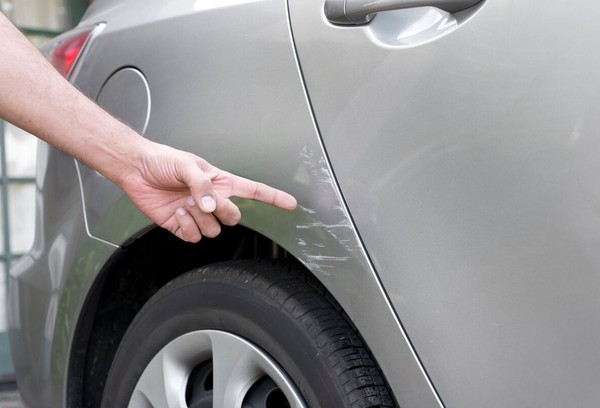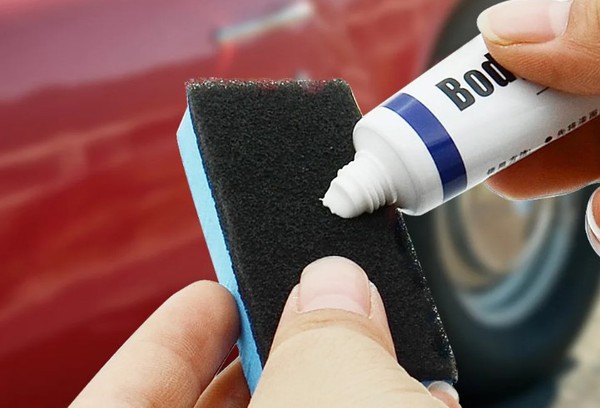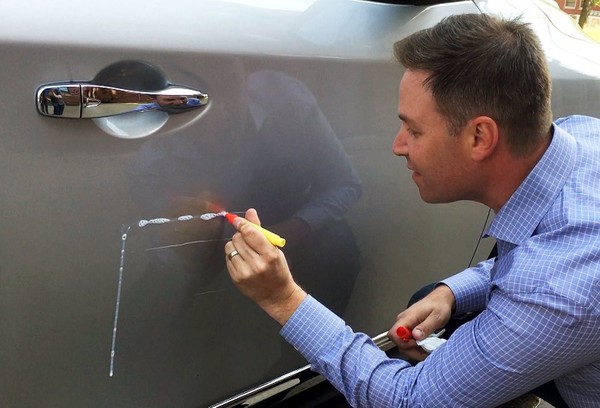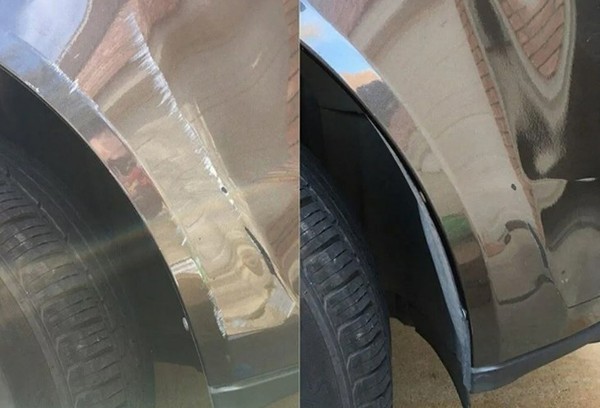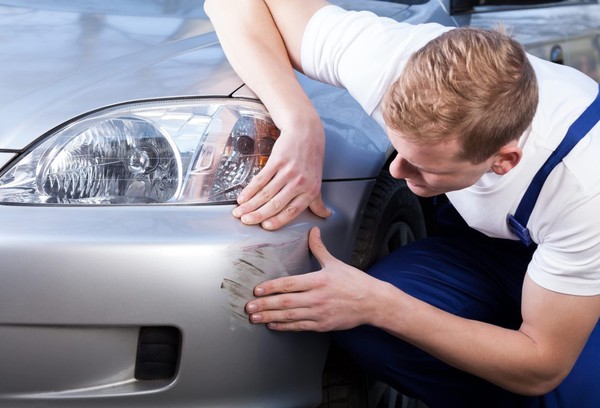How to remove scratches on a car: basic methods and their descriptions
Content:
The formation of various defects on a car is inevitable, even when a person drives a vehicle carefully, abrasions can be left by other road users. Therefore, many drivers often face the question of how to polish a scratch on a car with their own hands. How to get rid of the damage will depend on the depth and extent of the abrasion.
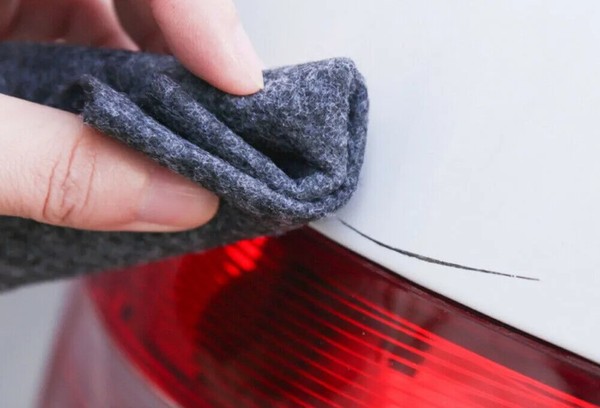
Why are deep scratches dangerous?
Deep scratches on a car present many dangers and problems:
- Scratches on a car's paintwork penetrate to the metal surface, which causes corrosion. Moisture and salts on the road get into the abrasions and contribute to rust and deterioration of the metal, which can ultimately lead to damage to the body.
- Scratches significantly spoil the appearance of the car. They can be visible and attract attention, reducing its resale value.
- Scratches serve as a starting point for other damage.For example, if the paintwork is deformed, the car becomes more vulnerable to the effects of sunlight, wind and precipitation.
- Scuffs lead to fading of the body color due to exposure to the sun's ultraviolet rays.
- Repairing deep scratches can be difficult and expensive, especially if the car door or entire body needs to be repainted.
Do-it-yourself scratch removal
Before rubbing out scratches on the car body, the vehicle must first be thoroughly washed. Afterwards, on the cleaned surface, you can determine the characteristics of the damage to the paintwork and the depth of the defects, then choose a method on how to get rid of them.
Taking into account the depth and area of scratches, there may be the following ways to fix them:
- Removing scratches and small chips by polishing (manually or using a polishing machine).
- Minor varnish scratches and other small defects are corrected using a restoration pencil, colored wax or nano-products.
- Serious scratches to “living” metal cannot be hidden without painting. In these cases, you will need to spend a lot of money on coloring.
Therefore, it is worth considering each of the options on how to remove scuffs and chips, and polish the car yourself from scratches.
How to remove scratches on varnish
In this case, only minor defects are considered, which are noticeable only from a certain angle and are absolutely invisible on a wet car. This scratch only affects the top layer of varnish and is the easiest to repair.
Wax polish
To do this, you will need a wax polish applied after washing the car body. A thin layer of wax provides protection and fills in abrasions.The advantage of the method is that it does not require special knowledge and tools. But, as is easy to understand, this protection only lasts for a short time. After a certain period, repairs will need to be done again.
Polishing machine + fine abrasive paste
The most effective way to remove scratches yourself is to polish with a special machine using an abrasive paste. This way you can sand down almost any abrasions that touched the varnish coating, but did not reach the paint.
As a rule, polishing a car is trusted to specialists, but if you want to do the work yourself, you will need:
- polishing machine;
- abrasive paste;
- sanding paper P-2000;
- spray;
- clean rags.
Before polishing, thoroughly wash the car with shampoo and dry. Place the car in the shade or box so that the car does not heat up under the sun's rays, and the abrasions and the result of the work can be clearly seen:
- Treat the scratched surface with sandpaper soaked in water and wipe dry with a cloth.
- Apply a small amount of paste to the circle and polish the scuffs, slowly increasing the speed. Try not to stay in one area for too long, otherwise the varnish will overheat.
- Continue polishing the body, alternating moving the machine left/right and up/down. Polish not only the scuffs, but also the area around them. Moisten the polishing area with water often and clean the wheel from dirt.
- You need to polish until the abrasion is completely removed.
How to remove scratches from paint
If not only the varnish coating has been deformed, then simple polishing is not enough.In this case, the scratch must be painted over with a restoration pencil that matches the color of the car’s body.
In their appearance and number of colors, these pencils are similar to nail polish. Moreover, they are made from quickly drying acrylic compounds that perfectly fill in scuffs.
Before covering defects, thoroughly clean and degrease the scratches. Then carefully paint them with a brush on a bottle of pencil.
Let the paint dry slightly for half an hour. Full polymerization will occur in approximately 7 days, so it is not recommended to wash the car at this time.
How to remove scratches to metal
To remove scratches to the metal, you must first apply a layer of primer, this can increase adhesion. Don't forget that scuffs need to be prepared. The metal inside needs to be sanded to remove visible stains from corrosion processes. Sharp edges must be smoothed.
The primer needs to be stirred thoroughly and a brush or toothpick should be used to treat the surface. There is no need to completely fill the abrasions with soil. It is necessary to leave space for paint. As a rule, applying several layers of primer with intermediate drying of half an hour is sufficient. The primer must dry before painting.
The paint is applied using capillary movements, touching only the inside of the damage. It is recommended to touch up scratches in several approaches with intermediate drying. The paint no longer needs to be applied once it has covered the primer layer. Approximately half the depth must be left to apply the varnish.
The varnish needs to be applied like paint.If there are instructions for it, then you need to follow the recommended drying time between layers. Drying times may vary for different coatings. Apply 2-3 thin layers to the inside of the abrasion, drying in between. Apply the varnish coating evenly along the scratch.
It is necessary to fill the remaining space in the damage itself with varnish, and it must rise slightly above the level of the factory varnish coating. When the product dries, all high spots need to be leveled by sanding with fine abrasive paper and then polishing.
Is it necessary to apply a varnish coating on top? It is required if the factory body coating included varnish. At the same time, it is important for the natural matching of shades, especially when the paintwork has a metallic effect. Additionally, the varnish plays the role of a protective film.
If the factory paint is not treated with a varnish layer, then it will not need to be applied. Instead, you need to fill the entire depth of the scuff with paint and make this layer just above the level of the factory coating. Excess paint will shrink slightly after drying, and the remainder is removed by sanding.

Important Features
As a rule, during the operation of the car, the bumper also gets damaged, but due to the fact that it is made of plastic, it is not in danger of developing rust. Removal of defects on the bumper is carried out taking into account the depth of the scratch in the same way as the above methods, except for metal processing.
Another common problem along with scratches is chipped paintwork. Even small defects occupy a fairly large area, so a restoration pencil cannot help in this case.
If the chip depth is insignificant, covering the defective area with a color-enriching polish will help, then you need to apply a protective layer of polish. If the chip has reached the primer or metal, painting is required, polish as the only method in this case is useless, but it can be used as a finishing touch.
Contacting specialists
In a car service, everything is done approximately according to the same scheme. The stages of work to rid the car body of scratches, which are carried out by specialists, also begin with an expert assessment of the deformed area.
The workflow may then consist of the following steps:
- preparation (washing, drying and degreasing the scratched area);
- applying a primer;
- Painting with the appropriate color (for which a spray gun is used) is done in 3 layers.
It often happens that it is more profitable to pay for the work of specialists than to carry out all the repairs yourself, without having the necessary experience, especially when we are talking about an expensive car, the appearance of which no normal car owner wants to spoil.
Removing scratches from your car can be quite effective, but depending on the depth and size of the damage, a different approach may be required. For small surface scratches, you can use polishes or special compounds that will help eliminate surface defects. In case of deep scratches, when the paintwork and even metal are damaged, a professional approach is required, including repainting the body.
To remove scratches, it is recommended to contact experienced specialists or car repair shops to ensure that the appearance of the car is restored.

